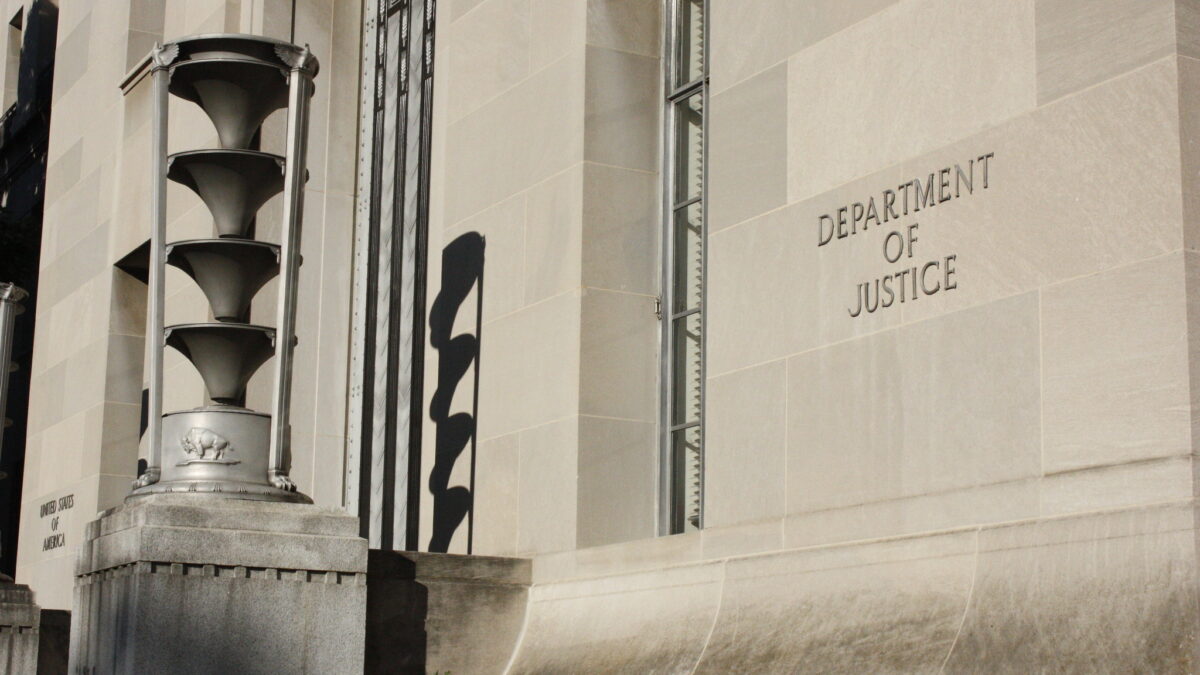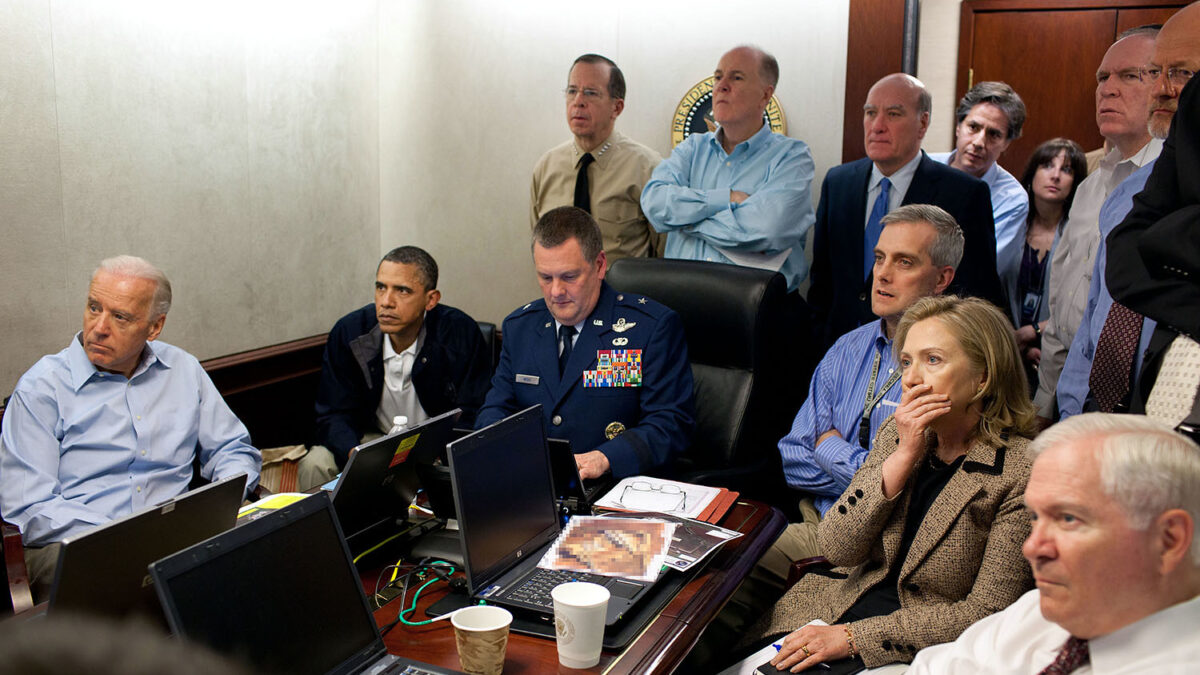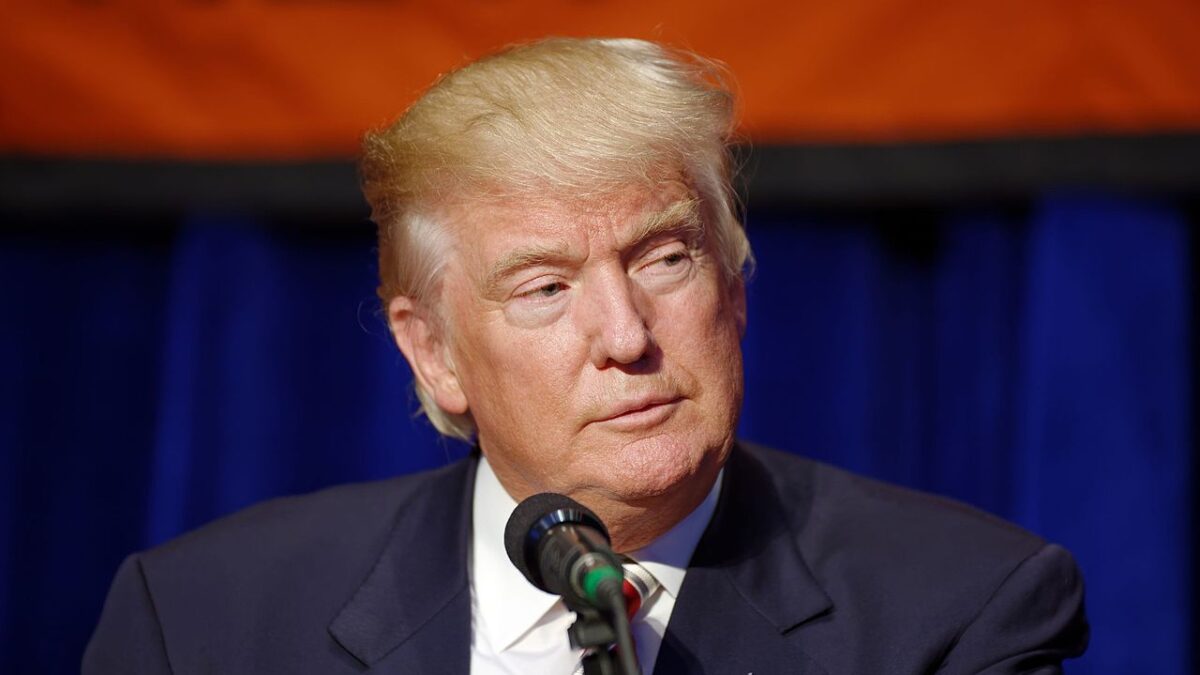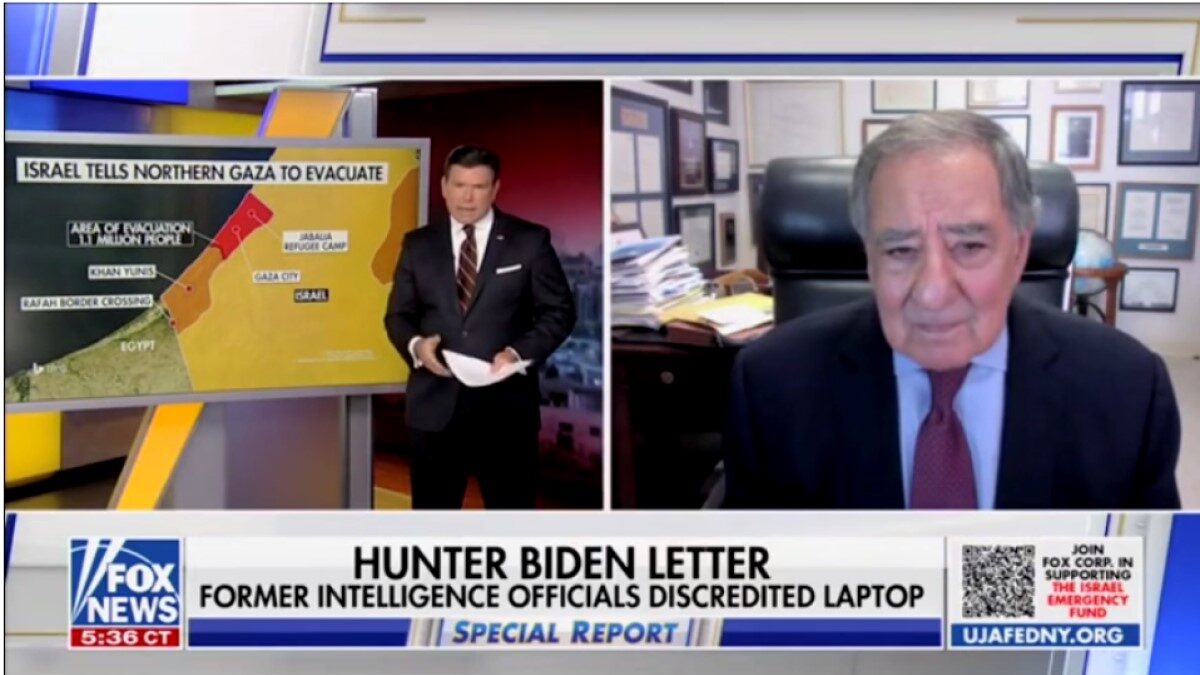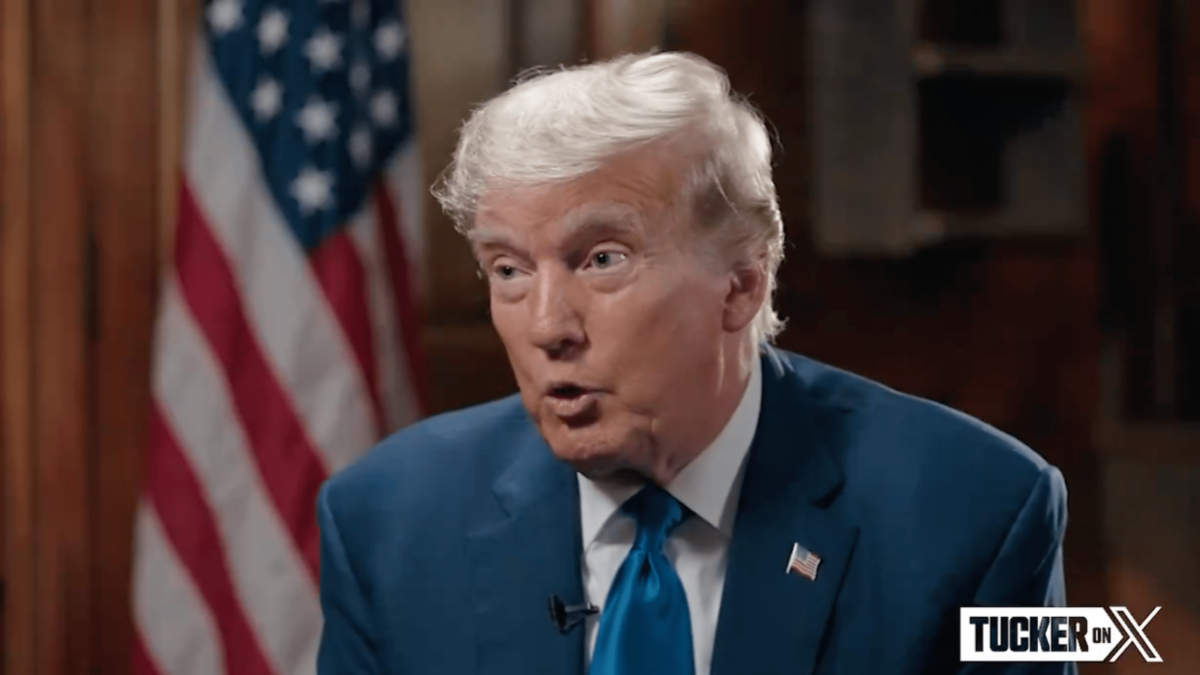Last Friday, Special Counsel John Durham filed yet another document with the federal court presiding over the criminal case against former Clinton Campaign attorney Michael Sussmann. Formally labeled a “Motion to Inquire into Potential Conflicts of Interest,” the most recent court filing maintained that Sussmann’s defense attorneys at Latham & Watkins held multiple conflicts of interest because of their previous representation of Sussmann’s law partner, Marc Elias, and their former law firm Perkins Coie. Given those conflicts, Durham’s team argued the court should require Sussmann to waive the conflicts on the record.
In making this argument, however, Durham’s office included extensive details related to the purported conflicts that also exposed, more broadly, several aspects of the underlying Special Counsel investigation. For instance, over the course of some thirteen pages, Durham revealed for the first time that in addition to providing FBI General Counsel James Baker data purporting to show the existence of a secret communication channel between the Trump organization and the Russian Alfa Bank, Sussmann provided the CIA during a February 9, 2017 meeting, “data which he claimed reflected purportedly suspicious DNS lookups by Trump Tower, Trump’s residential apartment building, the EOP, and a healthcare provider, of internet protocol or IP addresses affiliated with a Russian mobile phone provided.”
In that same motion, Durham claimed that Sussmann told the CIA, “that these lookups demonstrated that Trump and/or his associates were using supposedly rare, Russian-made wireless phones in the vicinity of the White House and other locations.” The motion further explained how Sussmann had allegedly obtained this data, namely through tech executive Rodney Joffe whose internet company “had come to access and maintain dedicated servers for the EOP as part of a sensitive arrangement whereby it provided DNS resolution services to the EOP.” Joffe and his associates, the motion added, “exploited this arrangement by mining the EOP’s DNS traffic and other data for the purpose of gathering derogatory information about Donald Trump.”
Durham’s Friday filing was not the first time the Special Counsel’s office spoke through court documents — far from it.
Documents Do the Talking
From the beginning, the Special Counsel’s office let their documents do the talking, with the Sussman indictment spanning twenty-seven pages and including details suggesting “a scandal much deeper than merely Sussmann’s role in a second Russian hoax — a scandal that entangles the Clinton campaign, multiple internet companies, two federally-funded university researchers, and a complicit media.”
Then, a month later, in response to Sussmann’s “Motion for a Bill of Particulars” — a motion seeking more details concerning the charged crime — Durham revealed additional facts about the Special Counsel investigation. In that response, Durham’s team detailed the breadth of the information gathered to date by the Special Counsel’s office, including by “subpoenas and grand jury testimony” of “political organizations” (plural) and “an investigative firm.”
A “discovery update” filed by Durham in January added even more insight into the Special Counsel’s probe, including that there is still “active, ongoing criminal investigation” of Sussmann’s conduct. That court filing also revealed that Sussmann’s law partner and the top lawyer for Hillary Clinton, Marc Elias, had testified before a grand jury empaneled by the Special Counsel’s office, along with many of the other big names, such as James Baker and Bill Priestap.
The biggest revelation from the “discovery update,” however, concerned the fact that in early 2017, Sussmann, again on behalf of Joffe, met with the Inspector General of the Department of Justice about a “cyber-related matter.” During that meeting, Sussmann told the Office of the Inspector General or OIG that one of his “clients had observed that a specific OIG employee’s computer was ‘seen publicly’ in ‘Internet traffic’ and was connecting to a Virtual Private Network in a foreign country.”
The discovery update also revealed that Sussmann’s legal team informed the Special Counsel’s office that Joffe was the client who had “observed” the “cyber-related matter” Sussmann reported directly to the Inspector General. And armed with that information, Durham’s team returned to the OIG and obtained additional documentation concerning that meeting, even though the OIG office had originally claimed “it had ‘no other file[] or other documentation’ relating to this cyber matter.”
A few days after filing the “discovery update,” Durham filed a “clarification to that document which in itself exposed more intrigue, with the special counsel’s office stating that it is now interviewing individuals connected to the Sussmann-Joffe “cyber-related matter” that Sussmann brought to the attention of the DOJ’s Inspector General in March 2017. The “clarification” also revealed the OIG’s lack of cooperation and lack candor with the Special Counsel’s office, particularly in its withholding of relevant documents and cell phones potentially pertinent to the Durham investigation.
The Special Counsel’s filings in its criminal case against Igor Danchenko followed the same pattern. In that case, Durham’s team charged Danchenko in a five-count indictment with lying to the FBI during the agents’ questioning of him related to his role as Christopher Steele’s “Primary Sub-Source.”
The Danchenko indictment surpassed the length of the charging document in Sussmann’s case, with Durham’s team providing detailed allegations, over the course of thirty-nine pages, suggesting the Special Counsel’s office has been untangling many of the threads of Spygate.
For instance, the speaking indictment in Danchenko’s case cleared Sergei Millian, whom Durham alleged Danchenko had falsely claimed was his sub-source for the “intel” included in the dossier. Even more significant was the charge that Danchenko lied to the FBI about never communicating with “PR Executive-1,” whom attorney Ralph Martin later confirmed was his client, Charles Dolan Jr.
As I explained at the time, “the revelation that Danchenko used Dolan as a ‘sub-source’ for the dossier is significant because of Dolan’s long-time connections to the Clintons and the Democrat Party—and because none of what appears to have been sourced to Dolan was true, including one claim in the dossier that Dolan invented.”
Thus, by elaborating on his case against Danchenko, Durham revealed to the public that “a Clinton crony in the person of Dolan fed Danchenko false information that Danchenko then presented to Steele as intel. Steele then regurgitated Danchenko’s claims in the Clinton campaign-funded dossier the former MI6 agent provided the FBI,” which led to the surveillance of the Trump campaign.
Suspiciously Vocal
But why is John Durham telling us this?
While critics of the Special Counsel’s investigation may posit there is a nefarious reason behind the extensive court filings, such a claim cannot withstand scrutiny because if Durham or his team were motivated by malice, they would have done what we saw from the Crossfire Hurricane and Mueller Special Counsel investigators and lawyers — selective leaks to friendly outlets.
But Durham’s probe has proven leak-free, negating a nefarious explanation. Yet there must be a reason for going public with the details he has.
There are several possibilities, including that Durham is attempting to shake up the defendants or shake loose some of the other players.
Letting the defendants know, in court filings, some of the evidence they have, which could result in additional charges, might prompt cooperation in a way that plea negotiations can’t.
Similarly, with only three indictments handed down to date — former DOJ lawyer Kevin Clinesmith being the third — the Special Counsel’s office may want to encourage cooperation by other as-of-yet uncharged players. Or maybe he wants to make someone nervous, who then unwittingly incriminates himself (or herself) in conversations with other cooperating witnesses.
The Special Counsel’s office may instead (or may also) be using the speaking court filings to ensure the investigation is not prematurely shut down by the Biden Administration. The details included in the latest filings, when coupled with revelations in earlier court documents, make it politically impossible at this point for Attorney General Merrick Garland to pull the plug on Durham.
Another possibility is that the Special Counsel’s office wants those inside the government rattled. If so, the tactic worked beautifully when he filed the “discovery update” that called out the OIG for its failure to provide Baker’s cell phone and the complete file related to the “cyber matter” Joffe had fed them through Sussmann.
Soon after the public filing of the “discovery update,” the OIG’s apparently complained to Durham’s team about the details included in the court document, trying to justify its failure to turn over Baker’s cell phones. But in doing so, the OIG revealed it had other cell phones that might be of interest.
Or maybe Durham is merely attempting to keep the public informed, in a legal way, with the end goal being restoring some semblance of trust in the DOJ, after those seeking to destroy Trump instead devasted the reputation of the justice department.
No matter Durham’s motive, the question now is whether a court will attempt to silence him. That, in effect, is what Sussmann is attempting to do in his response to Durham’s latest filing.
In response to Durham’s Motion to Inquire into Potential Conflicts of Interest, after attesting that he had no issue with waiving his conflicts on the record, Sussmann moved to strike the “Factual Background,” Durham had included in the motion, calling the briefing “provocative” and “misleading.”
Sussmann’s motion to strike, which is merely a request to the court to disregard that portion of Durham’s motion, then detailed, what he claimed was the Special Counsel’s “pattern of including unnecessary prejudicial material in public filings.” Sussman then argued that “there can be no doubt,” that the Special Counsel is “intend[ing] to further politicize this case, inflame media coverage, and taint the jury pool.”
While Sussmann’s motion to strike concerned only Durham’s most recent filing, should the court grant that motion, it would likely also caution the Special Counsel’s office to limit extraneous discussions further court filings.
But will it? And under what authority?
While federal procedural rules provide that a defendant may file a motion “to strike surplusage from the indictment,” there is no specific federal rule governing supposed extraneous matters contained in other motions. And yet, Sussmann never filed a motion to strike the supposed “surplusage” from the indictment. To the contrary, he filed a motion seeking more detail in the motion for a bill of particulars.
The question, then, will be what standard the court applies in deciding whether to strike the factual background from the recent motion and then potentially further directs Durham’s team to limit the detailed discussions in the future.
In deciding whether to strike “surplusage” from an indictment, controlling circuit precedent provides that a court should grant the motion to strike “only if it is clear that the allegations are not relevant to the charge and are inflammatory and prejudicial.” In fact, such motions to strike “are highly disfavored in the D.C. Circuit.”
If the court applies this standard, Sussmann should lose because, even if the details are not relevant and even if they are inflammatory, there is no prejudice because a jury has not yet been impaneled. And during the voir dire process, when the prosecution and defense attorneys question the jury pool, they will be asked about their knowledge of the case and to the extent coverage of Durham’s filings created prejudice, such potential jurors can be removed from the pool.
As a practical matter, though, the judge may worry that Durham’s approach will make it more difficult to later impanel an impartial jury. In fact, Sussmann attempts to play up such fears by noting that he “reserves all rights,” including the right to seek “extensive voir dire about potential jurors’ exposure to prejudicial media, . . .”
How the court will rule is anyone’s guess at this point, but we will likely see a counter from Special Counsel Durham’s office first—and maybe a few more hints on what is to come as well.
